World Emoji Day 2018: The 💪🎉📦 They Are, The Harder They Fall
Published on July 17, 2018/Last edited on July 17, 2018/6 min read
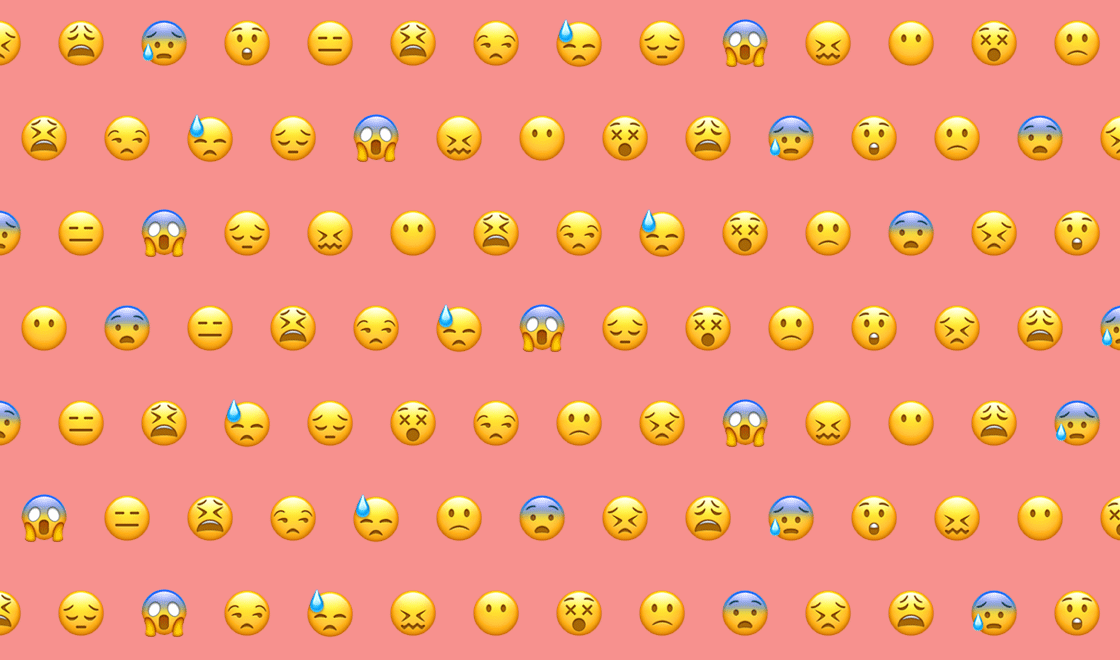

Lenny Fishler
Data Strategy Manager at BrazeHappy World Emoji Day 2018!
This (admittedly somewhat dubious) holiday was established all the way back in 2014 by Emojipedia founder Jeremy Burge to promote and celebrate this unique little communication medium. But four years after the first World Emoji Day and seven years after Apple kickstarted the humble 😜😍😅s journey to the spotlight by adding emoji support to the iPhone, new research conducted by Braze (formerly Appboy) on emoji use in marketing emails suggests that the holiday’s namesake has reached something of an awkward age.
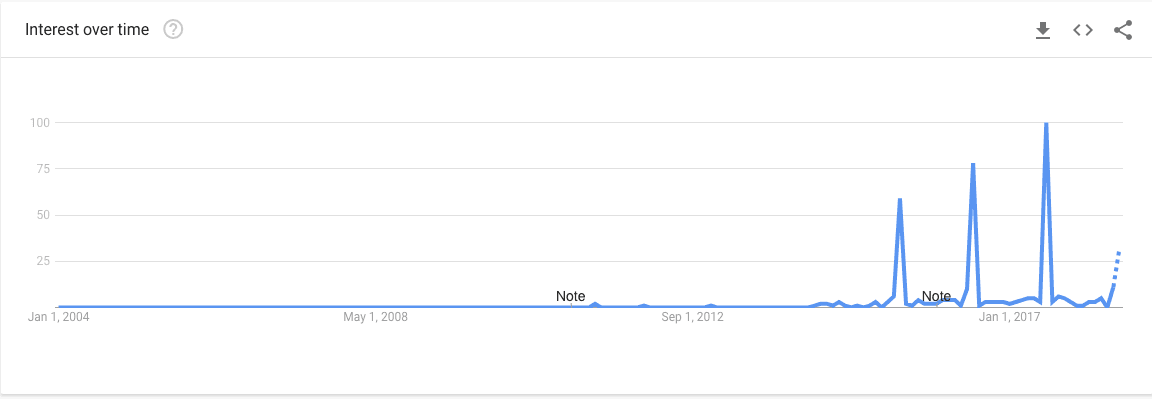
Not all the signs are concerning. World Emoji Day itself, for instance, is still going strong, with searches for the holiday rising consistently year after year according to Google Trends. And GAFA is all, with Apple announcing a new set of emojis in connection with the holiday. On the other hand, the most commonly used emoji in email marketing campaigns, the beloved ❤️ has seen searches plateau over the past couple years.
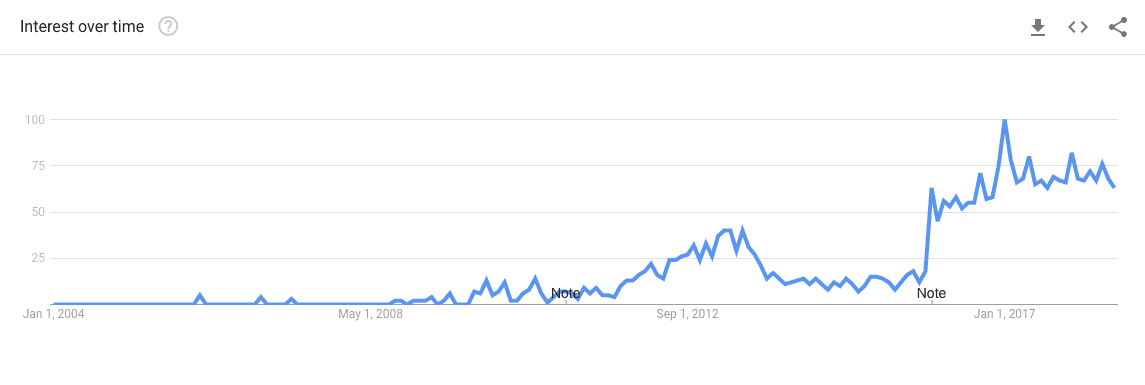
According to Wired, emoji culture has been shifting and evolving at a breakneck speed since the medium rose to popular acclaim—with a broadening range of emoji options better reflecting the diverse, multifaceted world that emoji users actually live in.
But while emojis have successfully embedded themselves into the public consciousness—and a good portion of the emails and text messages that the public sends each other—that very ubiquity is cutting into one of the key benefits of emojis back in the early days: novelty. In fact, Braze research found that about one-in-four marketing email campaigns incorporate one or more emojis, making them a regular feature of this ever-present messaging channel.
😱😰😡: Emojis Lose their Email Marketing Shine
Bad news, emoji-lovers: it appears that the honeymoon is over when it comes to using emojis to spice up the subject lines of marketing emails. In fact, not only does adding emojis fail to boost marketing emails’ unique open rates, Braze research has found that subject lines containing emojis actually significantly underperform compared to the average subject line in terms of this metric.
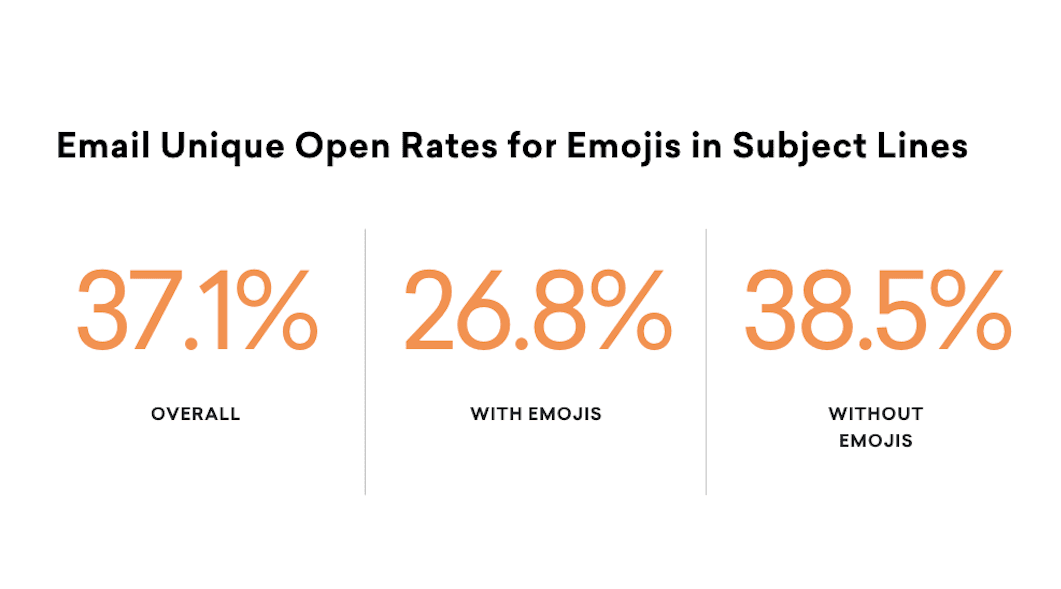
That’s right—emails that use emojis in their subject lines see unique open rates that are a full 28% lower than the average unique open rate for marketing emails. Why? Well, there are a few possible factors.
When emojis first burst onto the scene, they were quite unique—a way for people (and brands) to convey information and emotions simply, clearly, and, compellingly, with little effort. But the world has changed, and traditional emojis aren’t the only game in town when it comes to this sort of pictorial communication.
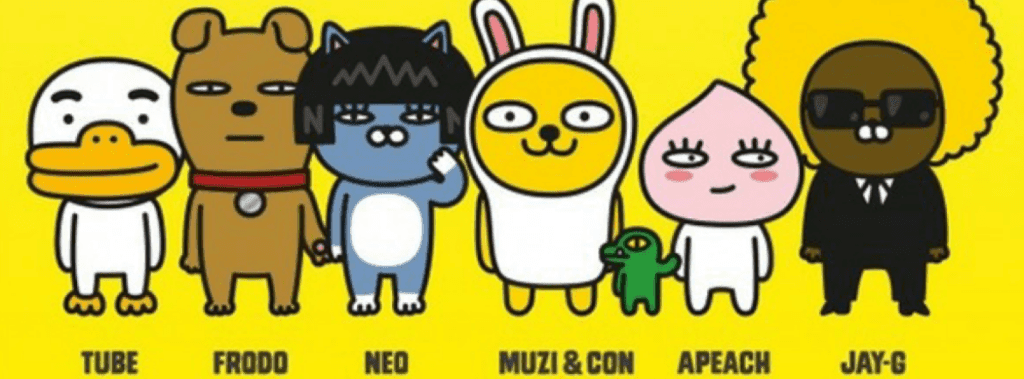
In recent years, there’s been an explosion of new, platform-specific emoticons and stickers that have more flexibility and specificity than Unicode allows. Consider Kakaotalk, an OTT messaging platform popular in South Korea, which has rolled out an array of proprietary, persona-specific character emoticon packages over the past five years (see the above characters for examples). These emoticons make it possible for users to pick a character that suits them, and then leverage a selection of varied emoticons depicting that character to convey their specific moods and feelings—or to convey multiple feelings at once. So instead of sending a friend “🕖🕑😤😠,” you could just use this:

You can see this approach on a variety of popular platforms—Apple’s animoji are a particularly memorable example. In addition, we’ve also seen popular chat applications like Slack, Groupme and Discord incorporate GIF support, giving consumers a wide variety of easy emoji alternatives.
Beyond simple competition, there’s also the possibility that the ways that marketers are leveraging emojis may affect their customers’ appetite for them.
We’re Seeing a Lot of the Same Emojis—From a Lot of the Same Kinds of Brands
Usage isn’t uniform across the full spectrum of emojis out there. Braze research found that ❤️, 🎁, and 🎤 were the three most commonly used emojis in email subject lines, with the popularity of ❤️ significantly eclipsing other emojis.
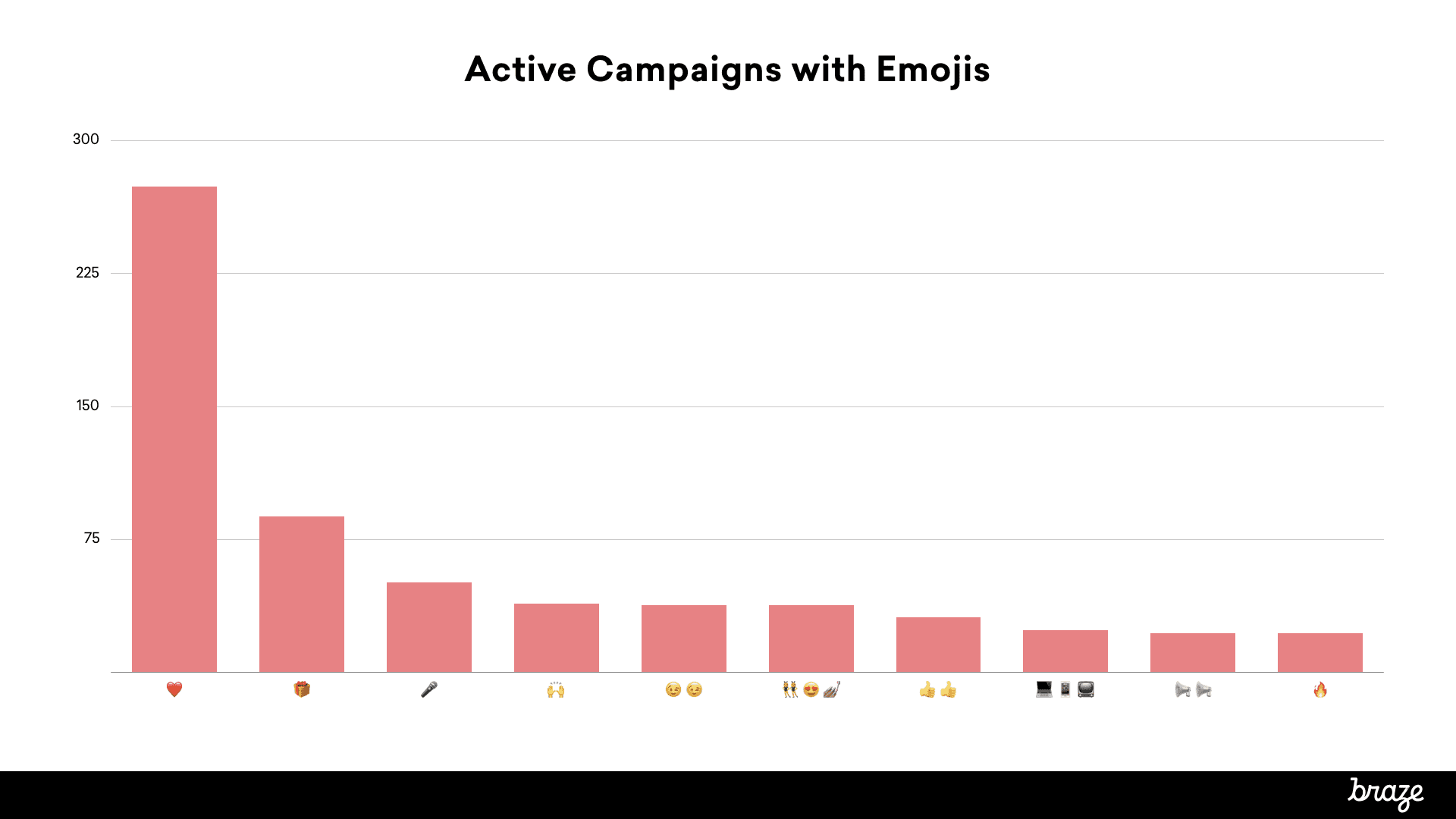
A similar dynamic plays out when you look at subject line emoji usage across different industries. The three verticals that make the most use of emojis in their marketing email subject lines are Music & Audio, Food & Beverage, and Entertainment, but the usage levels for those first two industries eclipse the rest, appearing at more than twice the rate of any other vertical.
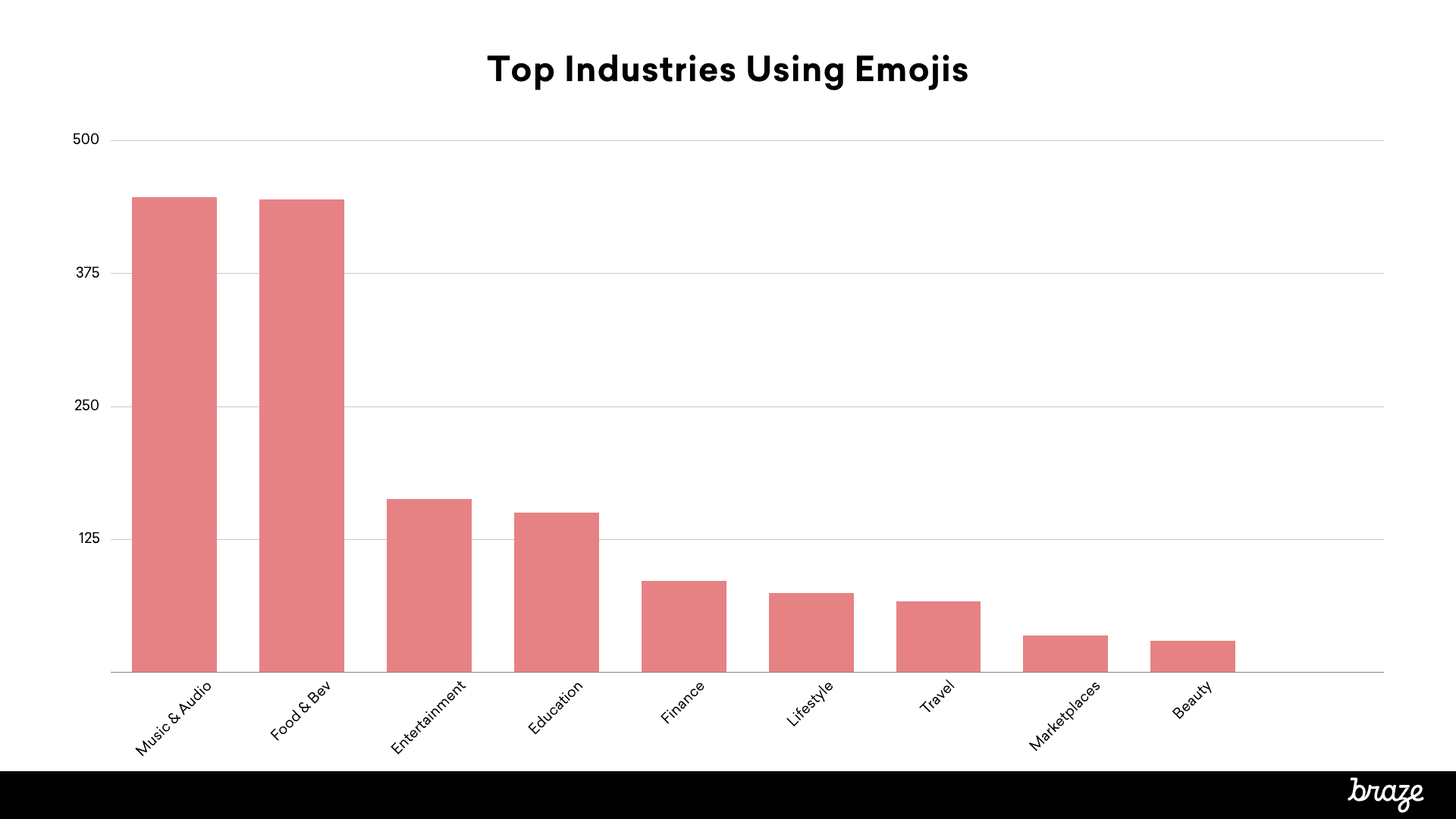
For a lot of consumers, that means that when they’re seeing emojis used in the marketing outreach they receive, it’s likely to be the same few emojis from the same kinds of brands—making it more likely that this once-novel communication tool feels rote.
What All This Means for Marketers
If you’re scratching your head and wondering if your organization is misusing emojis, that’s actually a positive sign: it means that you care, which is step one in digging deeper. And while it’s true that our research suggests that using emojis in your subject lines can be counterproductive, it’s also the case that not all brands’ customer engagement strategies are created equal.
Instead of jumping to conclusions and banishing emojis from your messaging, take a step back and investigate whether they’re helping or hindering your outreach. By running multivariate tests comparing the messages you send with emojis to variants without them, you can get a fuller picture of whether your company’s unique messaging works better or worse with emojis among your unique audience base. Some brands may find that their outreach works better without emojis in the mix, but it’d be foolish to make a decision about how to adjust campaigns before all the relevant facts are in.
The truth is, emojis and consumer sentiment about them are still evolving, and this year’s results aren’t necessarily going to reflect how people respond to them next year or even next month. One smart way to keep current? Leverage the Braze Intelligence Suite’s Intelligent Selection tool to determine whether emoji-containing or emoji-free message variants are more effective at reaching your customers and automatically ensure that the version that’s most impactful right now is the one that’s being delivered.
Methodology
This analysis examined email campaigns, email subject lines, and email unique open rates associated with more than 2,000 marketing campaigns across 25 distinct industries during 2017, with data analyzed on a per-industry and per-emoji basis level of granularity. Unique opens were defined for the purposes of this analysis as the number of unique email opens divided by the number of total email sends.
Be Absolutely Engaging.™
Sign up for regular updates from Braze.
Related Content
View the Blog
How AI Decisioning Transforms Marketing (A Complete Guide)

Team Braze

AI decisioning cheat sheet: How to crawl/walk/run with BrazeAI Decisioning Studioᵀᴹ

Team Braze

A day in the life of a data scientist on the BrazeAIᵀᴹ forward-deployed engineering team
